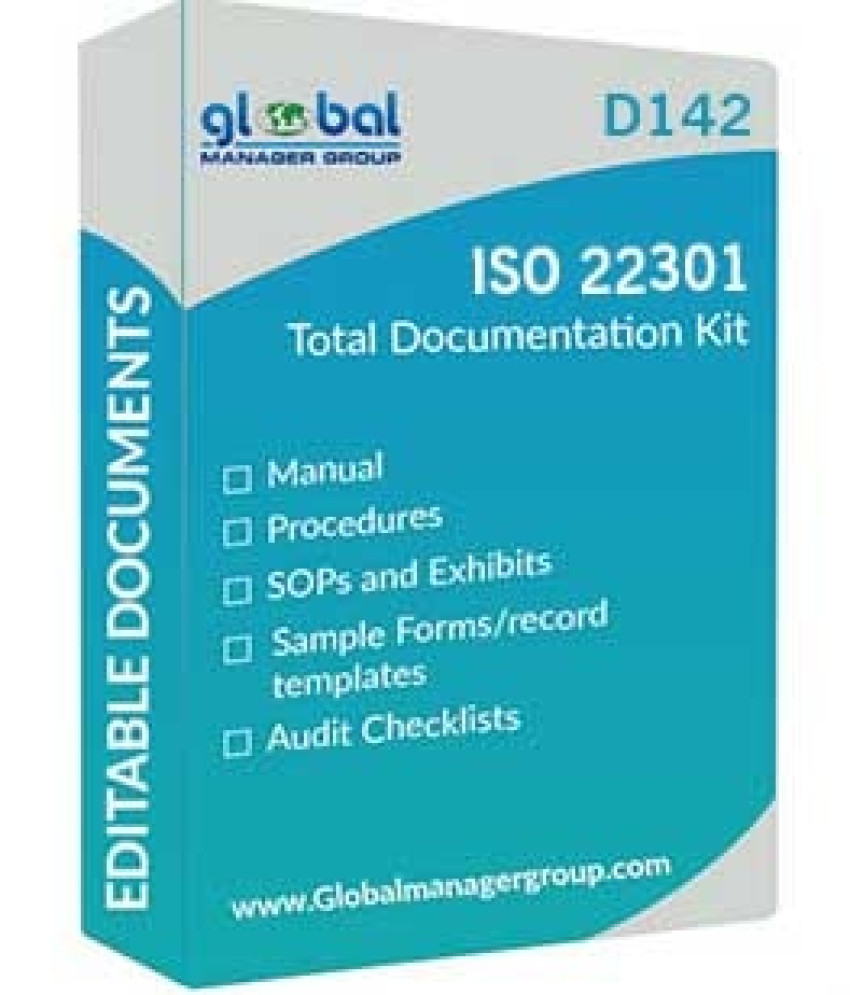
In a generation in which enterprise disruptions are inevitable, groups want a robust framework to ensure continuity in the face of unexpected challenges. ISO 22301, the international widespread for enterprise continuity control, affords a scientific technique for safeguarding in opposition to disruptions and minimizing the effect on operations. This newsletter explores a practical technique for crafting and imposing ISO 22301 procedures, shedding light on key elements of the usual and its documentation necessities.
Understanding ISO 22301 Procedures:
ISO 22301 procedures form the spine of an effective business continuity control system. these procedures are designed to manual organizations in figuring out dangers, growing reaction plans, and retaining important capabilities in the course of crises. A practical method involves growing clear, actionable, and nicely documented procedures that align with the agency's dreams and context.
Key Components of ISO 22301 Procedures:
1. Risk Assessment and Analysis:
ISO 22301 requires corporations to behavior a radical danger evaluation to pick out potential threats. Approaches must define the methodologies for hazard evaluation, ensuring comprehensive information on vulnerabilities and capability effects on commercial enterprise continuity.
2. Business Impact Analysis (BIA):
Developing procedures for BIA is critical for understanding the vital techniques and their dependencies. This step involves assessing the effect of disruptions on numerous commercial enterprise functions, supporting prioritized healing efforts.
3. Developing a Business Continuity Policy:
A nicely described coverage is a cornerstone of ISO 22301 procedures. Processes need to guide businesses in establishing a policy that aligns with their targets, communicates management dedication, and sets the stage for the entire business continuity management system.
4. Emergency Response and Crisis Management:
Processes should detail the steps to be taken at some point during emergencies, outlining roles, obligations, and communication protocols. This guarantees a speedy and coordinated reaction to mitigate the effect of disruptions.
5. Documenting the ISO 22301 Manual:
The ISO 22301 manual serves as the number one record outlining the agency's enterprise continuity control machine. Procedures should deal with the development and preservation of this manual, making sure it reflects the organization's dedication to ISO 22301 compliance.
Implementation techniques:
1. Training and Awareness Programs:
Procedures have to include techniques for training employees and developing attention approximately commercial enterprise continuity. This ensures that personnel are nicely equipped to execute their roles at some point of disruption.
2. Regular Testing and Exercising:
ISO 22301 emphasizes the importance of trying out and working out business continuity plans. Procedures have to define how agencies can behavior everyday drills to validate the effectiveness of their techniques and identify areas for development.
3. Continuous Improvement:
A practical method for ISO 22301 procedures includes establishing a framework for continuous improvement. Procedures must guide groups in conducting regular reviews, audits, and evaluations to decorate the effectiveness of their business continuity control gadget.
Conclusion:
In conclusion, a realistic method for ISO 22301 procedures is important for businesses searching to unleash the entire potential of their enterprise continuity efforts. By understanding and enforcing the key additives outlined in this text, groups can navigate disruptions with resilience, acquire ISO 22301 certification, and in the end ensure the continuity of important operations in the face of uncertainty. Embracing this practical method not only aligns agencies with worldwide requirements but additionally fortifies them against the unpredictable demanding situations of the business landscape.


